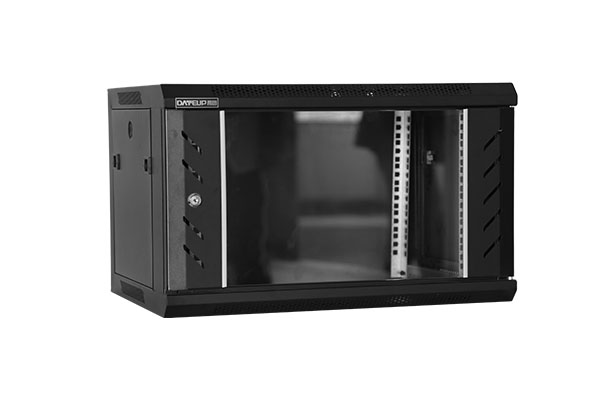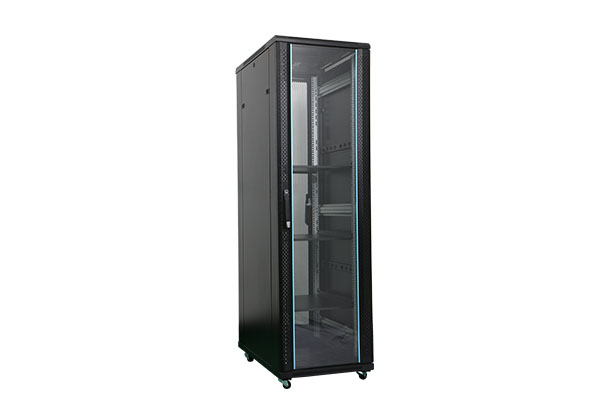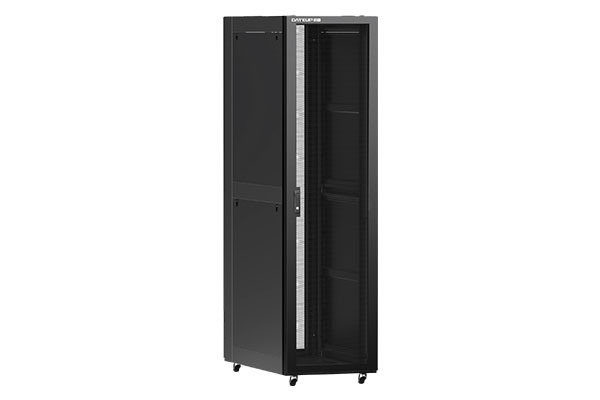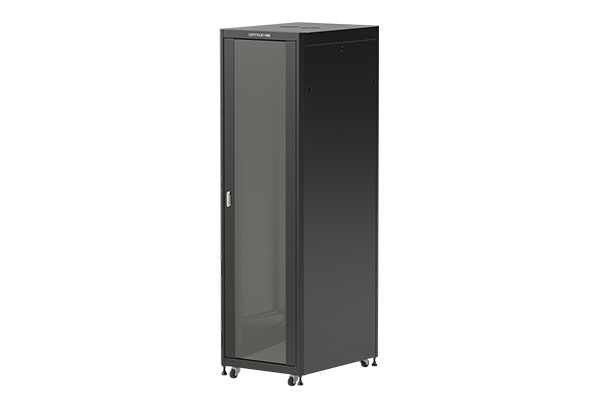Network cabinet: efficient management, safe and reliable IT infrastructure components
Release Time : 2024-10-12
With the rapid development of modern information technology, network cabinets play a vital role as the infrastructure of key IT environments such as data centers and server rooms. It not only needs to have good heat dissipation performance and convenient maintenance channels, but also needs to ensure the stable operation of equipment and data security. Today, we will introduce in detail a network cabinet designed for efficient management and safe and reliable. Its features are as follows:
1. Transparent front door, intuitive monitoring
The network cabinet adopts a tempered glass front door design, which not only improves the overall aesthetics, but more importantly, through the transparent material, the operation and maintenance personnel can intuitively monitor the operating status of the equipment inside the cabinet, discover and deal with potential problems in time, and ensure the stable operation of the IT environment. In addition, the front door opening angle is greater than 180°, which is convenient for the installation and debugging of equipment and greatly improves work efficiency.
2. Fast side door, convenient maintenance
The cabinet is equipped with a quick-opening side door. This design allows technicians to easily access internal equipment without moving the cabinet, greatly shortening maintenance time and improving operation and maintenance efficiency. At the same time, the side door can also be equipped with an optional side door lock to ensure a certain degree of security in an open environment and prevent unauthorized access.
3. Wiring hole design, standardized wiring
The wiring holes are pre-drilled on the top and bottom of the cabinet. This design not only facilitates the arrangement and wiring of cables, but also makes the wiring inside the cabinet more standardized and neat, reduces the safety hazards caused by the clutter of cables, and also improves the overall aesthetics of the computer room.
4. Strong bearing capacity, safe and reliable
The cabinet is made of high-quality cold-rolled steel plates, with a solid structure and a static load capacity of up to 100Kg. It can stably carry various IT equipment such as servers and storage devices, ensuring that there will be no deformation or damage during long-term use, providing a solid guarantee for the stable operation of the equipment.
5. Excellent heat dissipation performance
The fan installation hole is reserved on the top of the cabinet, and users can install appropriate fans according to actual needs to improve the heat dissipation performance inside the cabinet. This design enables the cabinet to keep the equipment running within the ideal temperature range when dealing with high-density computing environments, avoiding performance degradation or failure caused by overheating.
The network cabinet has become an ideal choice for modern data centers and server rooms with its transparent front door design, fast side door, standardized wiring, strong load-bearing capacity and superior heat dissipation performance. It not only meets the current IT environment's needs for efficient management, safety and reliability, but also reserves sufficient space for future expansion and upgrading. It is an important part of building an efficient and sustainable IT infrastructure.
1. Transparent front door, intuitive monitoring
The network cabinet adopts a tempered glass front door design, which not only improves the overall aesthetics, but more importantly, through the transparent material, the operation and maintenance personnel can intuitively monitor the operating status of the equipment inside the cabinet, discover and deal with potential problems in time, and ensure the stable operation of the IT environment. In addition, the front door opening angle is greater than 180°, which is convenient for the installation and debugging of equipment and greatly improves work efficiency.
2. Fast side door, convenient maintenance
The cabinet is equipped with a quick-opening side door. This design allows technicians to easily access internal equipment without moving the cabinet, greatly shortening maintenance time and improving operation and maintenance efficiency. At the same time, the side door can also be equipped with an optional side door lock to ensure a certain degree of security in an open environment and prevent unauthorized access.
3. Wiring hole design, standardized wiring
The wiring holes are pre-drilled on the top and bottom of the cabinet. This design not only facilitates the arrangement and wiring of cables, but also makes the wiring inside the cabinet more standardized and neat, reduces the safety hazards caused by the clutter of cables, and also improves the overall aesthetics of the computer room.
4. Strong bearing capacity, safe and reliable
The cabinet is made of high-quality cold-rolled steel plates, with a solid structure and a static load capacity of up to 100Kg. It can stably carry various IT equipment such as servers and storage devices, ensuring that there will be no deformation or damage during long-term use, providing a solid guarantee for the stable operation of the equipment.
5. Excellent heat dissipation performance
The fan installation hole is reserved on the top of the cabinet, and users can install appropriate fans according to actual needs to improve the heat dissipation performance inside the cabinet. This design enables the cabinet to keep the equipment running within the ideal temperature range when dealing with high-density computing environments, avoiding performance degradation or failure caused by overheating.
The network cabinet has become an ideal choice for modern data centers and server rooms with its transparent front door design, fast side door, standardized wiring, strong load-bearing capacity and superior heat dissipation performance. It not only meets the current IT environment's needs for efficient management, safety and reliability, but also reserves sufficient space for future expansion and upgrading. It is an important part of building an efficient and sustainable IT infrastructure.







